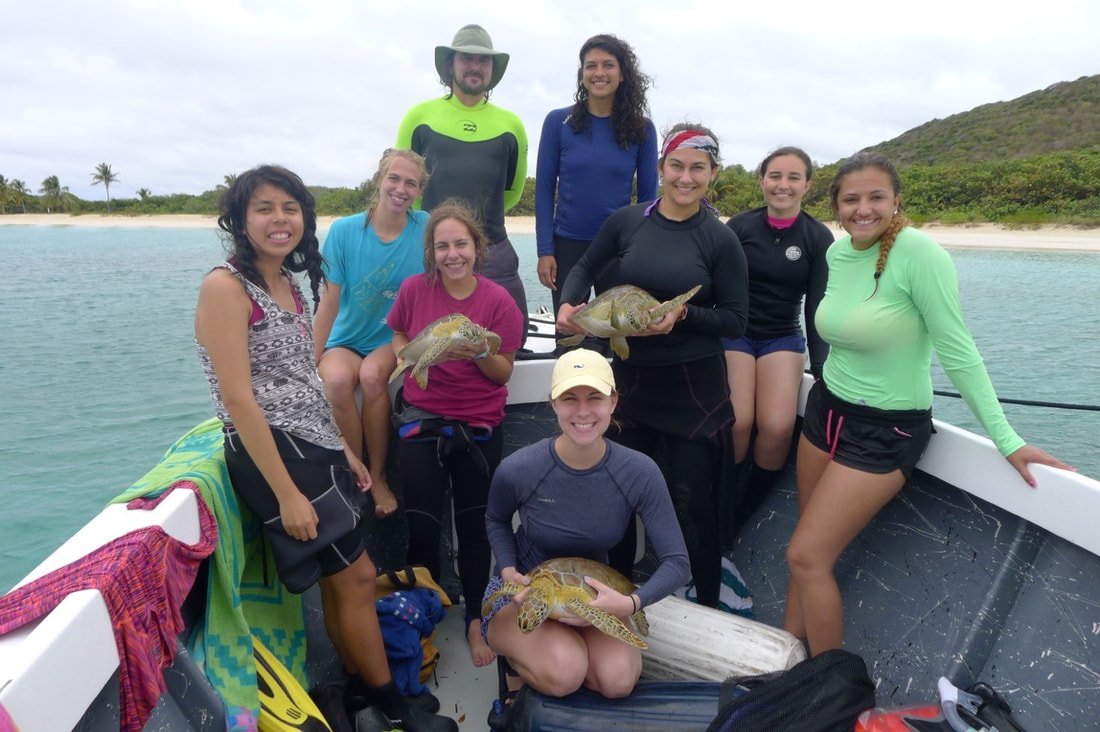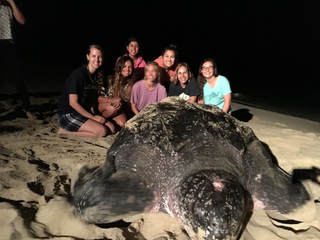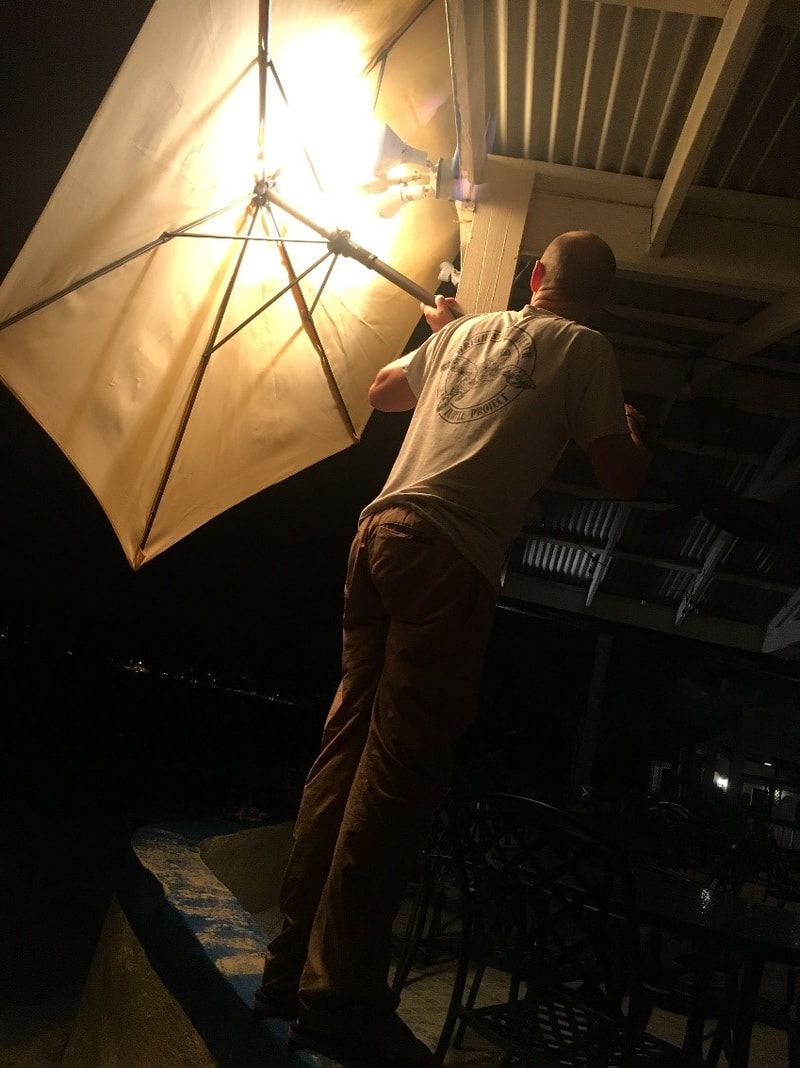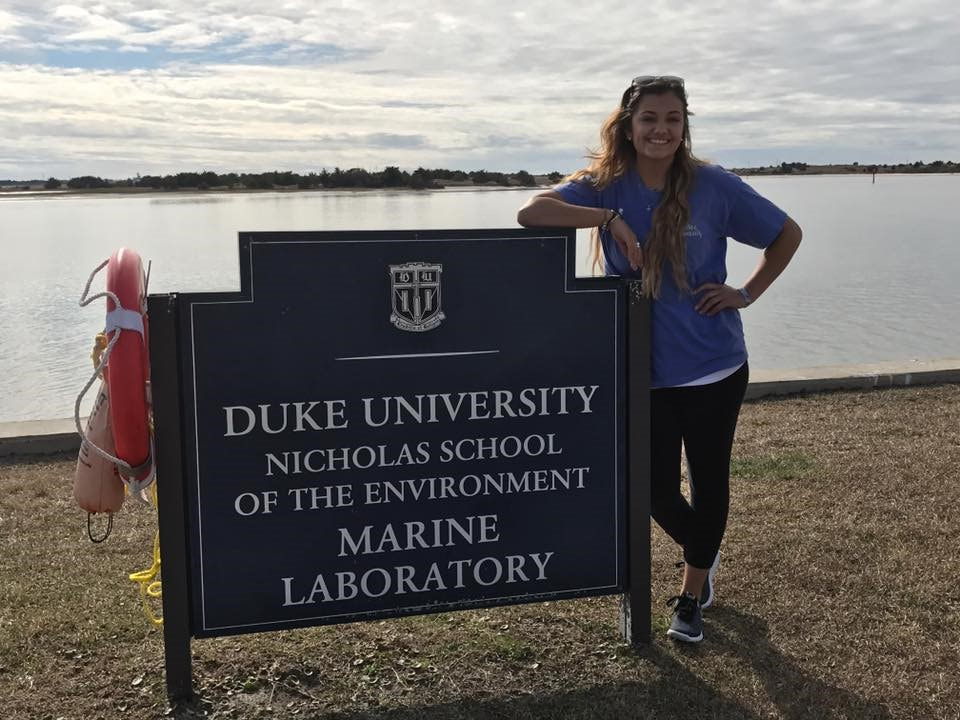|
Blog Post By: Skyler Klingshirn (summer sea turtle intern) Recently, I’ve been getting asked how I started working with sea turtles, and while I feel like I am very knowledgeable about them, I only got my start with sea turtles just over a year ago. Last spring, I was able to spend a semester at the Duke University Marine Lab in Beaufort, North Carolina. During my time at the marine lab, I was able to take a course on the biology and conservation of sea turtles. Through this course, I learned about all seven species of sea turtles, their life histories, different conservation efforts around the world, and more. Each spring semester at the marine lab is set up so students have the opportunity to travel with some of their courses. While learning about these topics in the classroom was interesting, my class was then able to travel to Puerto Rico and St. Croix in the U.S. Virgin Islands to learn more about green sea turtles and leatherback sea turtles in the field. We started our trip in Culebra, Puerto Rico. We were here for 5 days where we began each morning bright and early with a hike to the beach where we walked down the beach to practice identifying different turtle tracks, as well as, clean up any trash similar to how our patrols are run here in Edisto! After our morning patrol, we would make breakfast then head out to practice in water surveys of green sea turtles. To collect data on the green sea turtles in this area, we would set up a long net expanded between 2 boats then spend hour intervals snorkeling up and down the net. If we saw a turtle, we would swim to it, grab onto it, and bring it back up to our boat. Once we had collected a couple turtles, we would all return to the boat and begin the data collection process. For each turtle, we would record data including the size, weight, capture pictures, and see if it was tagged or not. If the turtle was not already tagged, we would tag it for future data records. After our days in Puerto Rico, we headed over to St. Croix where we switched from early mornings to late nights. In St. Croix, our main focus was the leatherback turtle. Each night, we would go to Sandy Point National Wildlife Refuge to perform night beach surveys waiting for nesting leatherback sea turtles to arrive. While this area has no problem seeing an abundance of leatherbacks each nesting season, we were there at the very beginning of the season, however, our professor reassured us all that they always see leatherbacks during this trip. We walked up and down the refuge for hours for 5 nights and unfortunately did not see a leatherback. As we returned back to our cabins, we were all very sad knowing we were leaving to go back home in 7 short hours without seeing a leatherback. Then at 3 a.m. we heard loud knocks on our door. It was my professor shouting that a leatherback had crawled up onto the beach right outside of where we were staying and started nesting. We all jumped out of our beds and ran out to the beach to witness this amazing moment. After she had laid her nest, it was time for her to make her way back into the ocean, however, there were automatic lights on one of the buildings on the beach causing the turtle to become very confused. She started heading towards the light and my professors had to step in and block the light and help guide her back into the water. It was truly a moment I will never forget, but also made me realize how small anthropogenic factors, such as white lights, can greatly affect wildlife. My semester at the Duke University Marine Lab helped me get a start in the field of marine wildlife conservation and helped me find a passion for sea turtles. I am super grateful this opportunity was available through my university and while I have yet to see a nesting loggerhead here at Edisto, I am looking forward to helping with all the night walks during the next two months to hopefully witness this process again.
*All pictures with turtle were allowed through special permits*
1 Comment
Ray H
7/10/2018 05:33:52 pm
Great article Skyler! We are so happy to have you with us this Summer!
Reply
Leave a Reply. |
Leah SchwartzentruberSea Turtle Biologist Archives
June 2024
|




 RSS Feed
RSS Feed